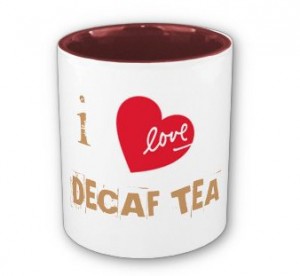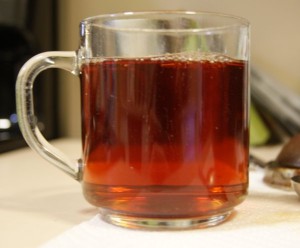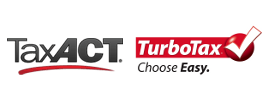
Until recently, it never occurred to me to try decaffeinated tea. I mostly kept my tea consumption confined to daylight hours, never going much beyond mid afternoon.
As my love of tea has grown, so has the urge for a post-dinner cuppa. Naturally caffeine-free herbal varieties are okay, but they are no substitute for my beloved black tea.
What I didn’t realize initially was how difficult it would be to find a good decaf tea. While doing research, I quickly learned about the four most commonly used methods used to extract the caffeine from the leaf. The CO₂ process seemed superior to the rest because it (supposedly) best retains the flavor of the original tea leaf without the use of a known carcinogen.
English Tea Store — an online tea merchant whose products and service have never disappointed me in the past — sells a decaf Irish Breakfast tea from which (according to their website) the caffeine is removed early, at the green leaf stage, using CO₂. The leaves are then left to mature. It sounded promising.
A funky chemical-like odor was the first thing I noticed when I smelled the dry tea leaves — very unusual, I thought, considering what I read about CO₂ caffeine removal. Unfortunately, that smell translated directly into a funky flavor when brewed.
The body of this decaffeinated tea was as full as English Tea Store’s regular Irish breakfast blend; however, the aroma and taste were way off. Because this was my first attempt at decaf tea, I can’t judge this tea too harshly. I have to assume that a good decaf cuppa is unattainable. Or, maybe the carcinogenic method of caffeine removal (a Methylene chloride solvent) is worth considering.


